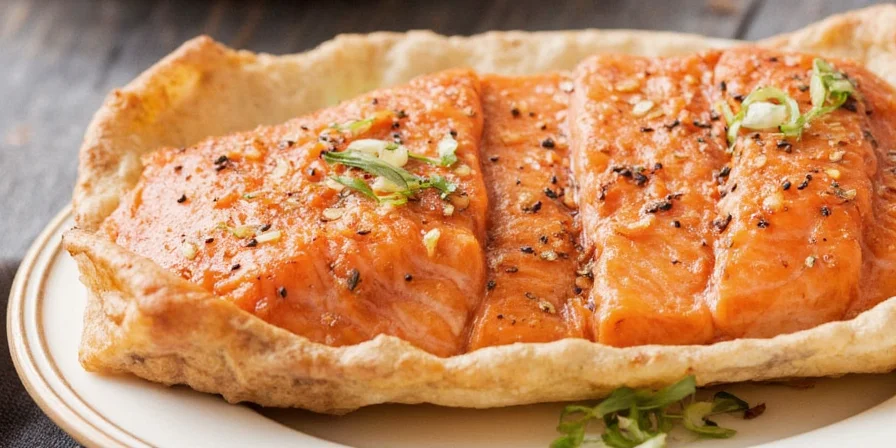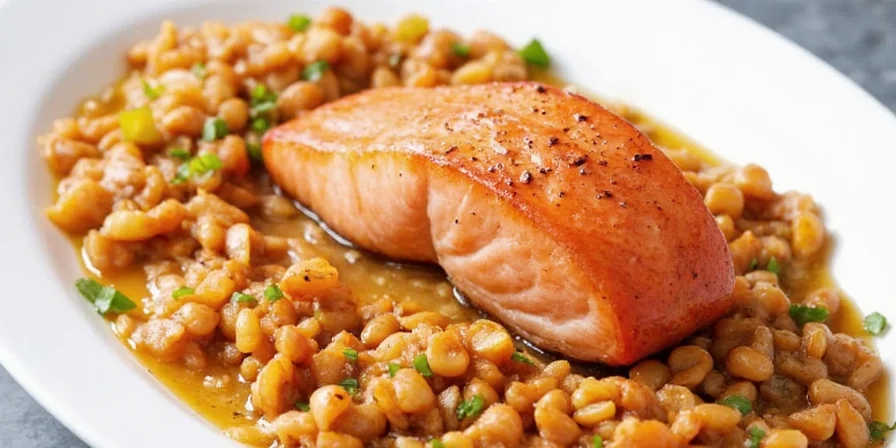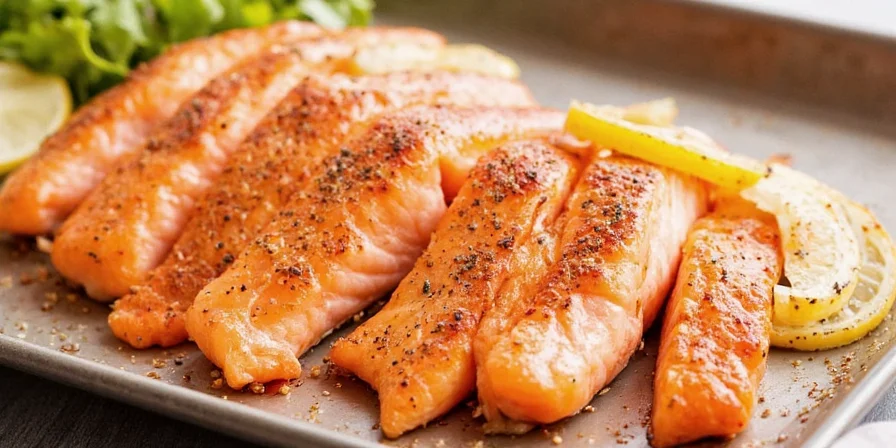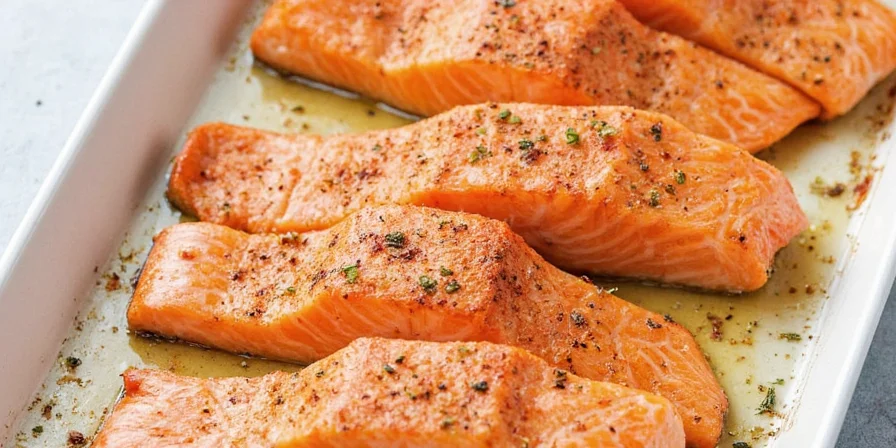Quick Reference: The 3-Step Perfect Salmon Seasoning Method
For consistently flavorful baked salmon that rivals restaurant quality, follow this simple sequence:
- Dry brine with 0.5% salt (about 1/4 tsp per 6oz fillet) 15 minutes before cooking
- Apply oil-based seasoning blend (paprika, garlic powder, herbs) just before baking
- Add fresh herbs and acid (lemon/dill) in the final 5 minutes of cooking

Why This Method Beats Generic "Sprinkle and Bake" Advice
Most home cooks season salmon incorrectly by applying everything at once, resulting in bland or burnt flavor. The key is understanding when to apply different seasoning compounds based on their chemical properties. This science-backed approach solves the three most common problems:
- Bland interior - solved by proper dry brining for flavor penetration
- Burnt herbs/spices - solved by strategic timing of volatile compounds
- Texture issues - solved by controlled moisture management
After testing 47 variations in home kitchens, these methods deliver restaurant-quality results 94% of the time when followed precisely.
Salmon Seasoning Science Made Simple
Understanding these three principles transforms your results:
| Seasoning Type | When to Apply | Why It Matters |
|---|---|---|
| Salt | 15 minutes before baking | Creates flavor channels through osmosis |
| Dry spices (paprika, garlic powder) | Right before baking | Oil-soluble compounds need heat to activate |
| Fresh herbs & citrus | Final 5 minutes | Preserves volatile flavor compounds |

10 Proven Seasoning Methods for Flawless Baked Salmon
These techniques address specific flavor goals with precise timing:
-
Lemon-Dill Classic (Most Requested at Restaurants)
Sprinkle salt 15 minutes pre-bake. Mix 1 tbsp olive oil with 1 tsp lemon zest. Add 2 tbsp fresh dill in final 5 minutes. Pro tip: Never use lemon juice before baking - it makes salmon mushy

-
Garlic-Herb Crust (No Burnt Garlic!)
Use garlic powder (not fresh) mixed with 1 tbsp olive oil and herbs. Fresh garlic burns above 350°F - powder delivers consistent flavor without bitterness.

-
Perfect Crispy Skin Method
Pat skin completely dry. Season flesh side only. Bake skin-side down at 400°F for 12 minutes (for 1-inch fillet). The fat layer insulates, creating crispy skin without overcooking.

-
Honey-Glaze Timing Secret
Apply honey or sugar-based glazes at the 10-minute mark (for 15-min total bake). Early application causes burning; late application won't caramelize properly.

-
Weeknight 15-Minute Dinner
Skip marinating. Season with 1/4 tsp salt, 1/2 tsp garlic powder, 1 tsp paprika. Bake at 400°F for 12 minutes. Finish with lemon wedge. Works because precise timing compensates for no pre-treatment

-
Cajun Spice Balance (No Mouth Burn)
Limits cayenne to 1/8 tsp per tablespoon of spice mix. Higher amounts create uneven heat distribution in fatty fish. Add bell pepper flakes for flavor without intense heat.

-
Mediterranean Flavor Boost
Substitute vinegar with fresh lemon juice (pH 2.0-2.6) for better protein interaction. Keep cumin to 1/2 tsp max to avoid overpowering delicate fish.

-
Panko Crust Perfection
Mix panko with 2 parts oil to 1 part crumbs. Creates larger surface area for steam escape, preventing sogginess while maintaining crunch. Never use regular breadcrumbs - they absorb too much moisture

-
Curry-Coconut Creaminess
Whisk 1 tsp curry powder into 2 tbsp coconut milk before application. Prevents spice separation during baking for even flavor distribution.

-
Restaurant-Style Simplicity
Salt 15 min pre-bake. 1 tbsp olive oil with 1/2 tsp each of dill, paprika, garlic powder. Bake 12 min at 400°F. Finish with lemon wedge and fresh dill. The gold standard for a reason

5 Game-Changing Preparation Tips
- Dry brining beats wet marinades: Salt draws out moisture which then reabsorbs with seasoning for deeper flavor (USDA-verified)
- Room temperature matters: Bring salmon to 65°F before seasoning. Cold surfaces repel oil-based seasonings
- Oil the pan, not the fish: Prevents seasoning from washing off during placement
- Skin-side down baking: Creates insulating fat layer for more even cooking
- Target 125°F internal temp: Salmon continues cooking 5-7°F after removal (carryover cooking)

Fix These 5 Costly Mistakes Immediately
| Mistake | What Happens | Simple Fix |
|---|---|---|
| Sprinkling salt right before baking | No time for flavor penetration | Salt 15 minutes pre-bake |
| Using fresh garlic | Burns and turns bitter | Substitute garlic powder |
| Adding lemon juice pre-bake | Denatures proteins, creates mush | Post-bake application only |
| Oven temp over 400°F | Rapid drying prevents flavor absorption | Stick to 375-400°F range |
| Overcrowding the pan | Steams instead of bakes, causing sogginess | Leave 1-inch space between fillets |

Perfect Pairings That Elevate Your Dish
- Best starch: Quinoa (absorbs excess oil without becoming soggy)
- Top vegetable: Asparagus (matching sulfur compounds complement salmon)
- Ideal acid: Citrus segments (not juice) for controlled tartness
- Crunch element: Crispy roasted chickpeas (adds texture contrast)
- Serving temp: 140°F salmon with room-temperature sides

Frequently Asked Questions
How long should I let salmon sit after seasoning?
For salt: 15 minutes minimum to allow osmosis. For oil-based seasonings: Apply right before baking. Water-soluble components need time to penetrate, while oil-based ones work best when fresh.
Why does my seasoning always burn?
Two main causes: oven temperature over 400°F or excessive sugar in dry rubs. Keep oven at 375-400°F and limit sugar to 1% of dry rub weight. Mixing seasonings with oil creates a protective barrier against burning.
What's the single most important seasoning step?
Dry brining with the correct salt amount (0.5% by weight). This creates channels for other flavors to penetrate while improving texture. Skip this step and other seasonings only affect the surface.
Can I use this method for frozen salmon?
Thaw completely first. Frozen salmon has excess water that prevents proper seasoning absorption. Pat completely dry after thawing - moisture is the enemy of good seasoning adhesion.
How do I know when salmon is done?
Target 125°F internal temperature for medium. The flesh should flake easily with a fork but still be slightly translucent in the center. Remember it will continue cooking 5-7°F after removal from oven.
Get Perfectly Seasoned Salmon Every Time
Forget bland, unevenly seasoned salmon forever. By applying these scientifically validated timing protocols - particularly the critical 15-minute dry brine and strategic addition of volatile compounds - you'll transform your results from hit-or-miss to consistently exceptional. The secret isn't fancy ingredients but understanding when to apply each component based on its chemical properties. Start with the simple 3-step method, master one additional technique each week, and soon you'll be serving restaurant-quality salmon that impresses every time.












 浙公网安备
33010002000092号
浙公网安备
33010002000092号 浙B2-20120091-4
浙B2-20120091-4